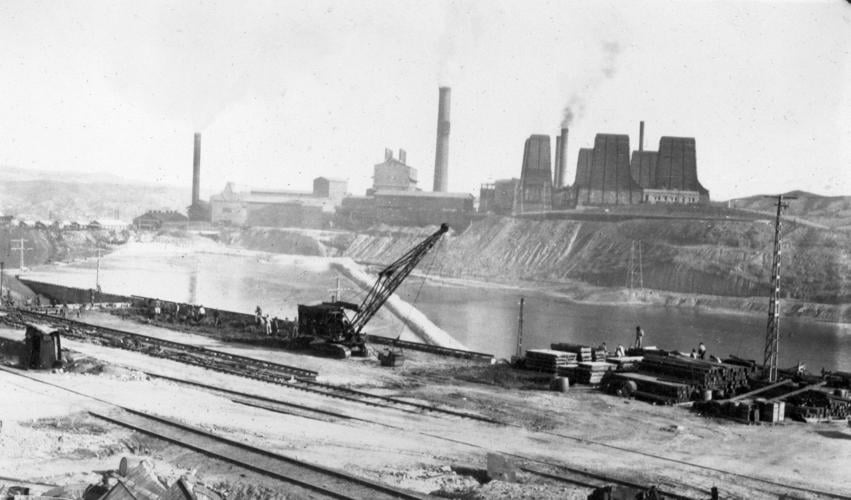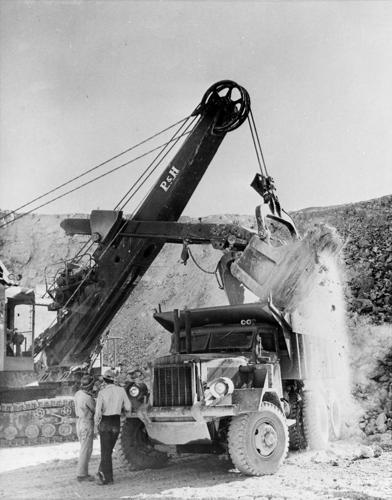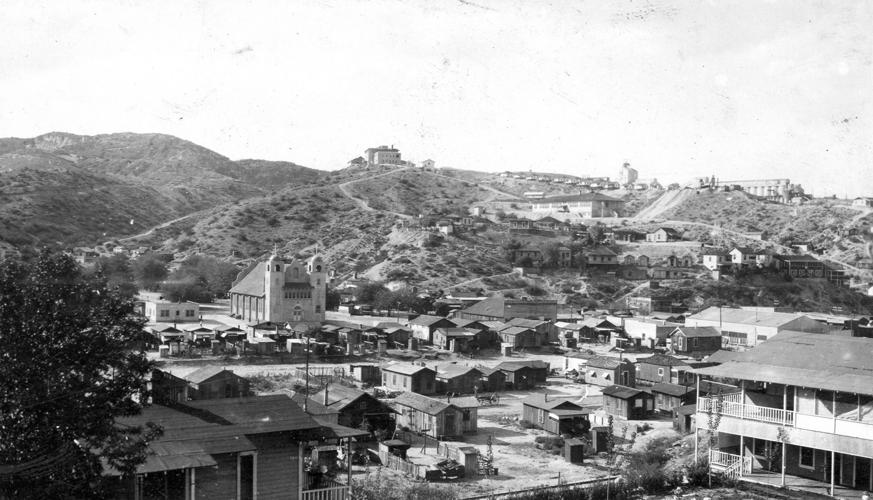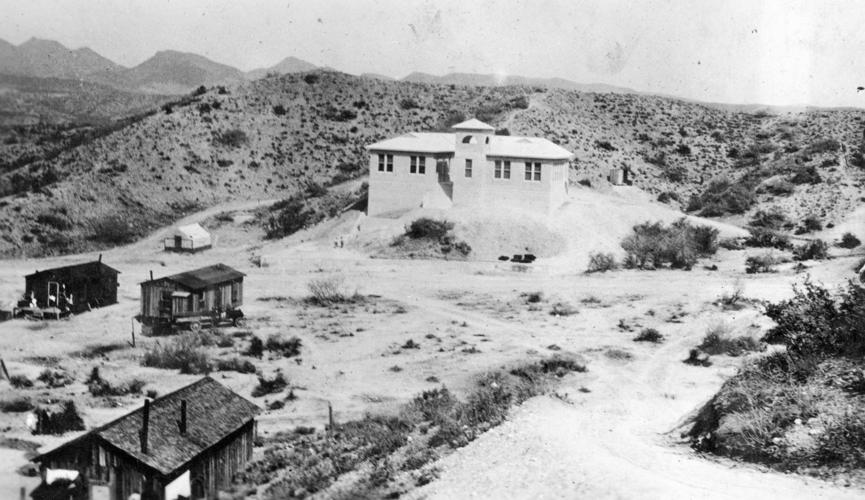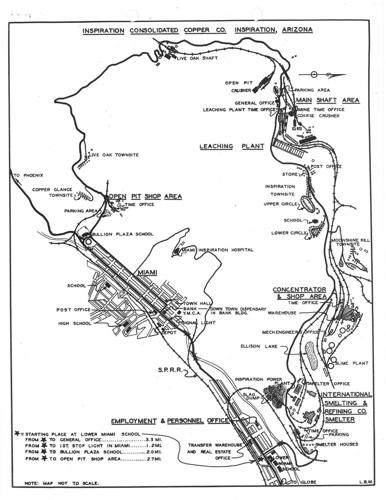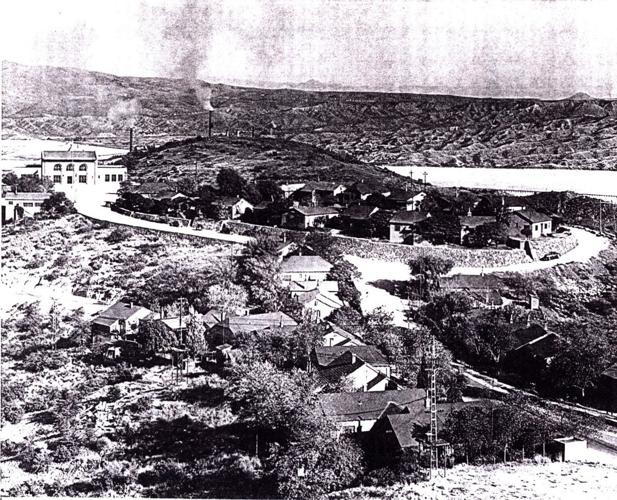One of the most prominent mining properties among the many porphyry copper ore deposits in the Globe-Miami Mining district is the Inspiration Mine.
It owed its beginning to the mining of a large outcrop of siliceous oxidized copper ore discovered by prospectors J.B. Coplen and Bud Woodson. The Black Warrior Copper Co. initially developed the property, located 6 miles northwest of Globe, in 1896.
Two years later the Southern Pacific Railroad established a branch line from Bowie to Globe, thus opening up ease of mineral transport to the market.
Original architects of the Inspiration Mine included Henry Krumb, W. B. Thompson and Louis D. Ricketts.
Some sources claim the mine was named after a fortune teller, Madame Inspiration, who operated a second-floor office in Globe adjacent to the offices of prominent mining men involved in developing the property.
At one time production at this mine supplied 7.5% of Arizona’s copper and 3.7% of the nation’s.
Abundant deposits of chrysocolla, a blue-green copper silicate mineral, led to further development of the area, including the Keystone Mine and Live Oak Mine. Discovered in veins of granite porphyry, the chrysocolla contained around 36% copper.
Subsequent discoveries of chalcocite, a black gray copper sulfide mineral containing around 80% copper, resulted from the cutting of the 1,000-foot Woodson tunnel in the north side of Inspiration Ridge. This led to the formation of the Inspiration Mining Co. in 1908, which later merged with the Live Oak Development Co. to form the Inspiration Consolidated Copper Co. in 1911.
A capital investment of $20 million was required prior to actual production, which commenced in 1915. This involved building a surface plant, railroad and 20,000-ton concentrator. Copper recovery was through flotation concentrate. Ricketts built the first flotation mill (14,000 tons per day) in Arizona at Inspiration, necessitating the erection of a large smelter in Miami by 1916.
While the ore at Inspiration was found to be of lower grade than at the nearby Miami property, the implementation of flotation enabled Inspiration to become a larger producer.
Prior to 1926, the copper ore mined was chalcocite. However, the Inspiration orebody comprised zones of mixed oxides and sulfides.
A new hydro-metallurgical process involving dual processes combining leaching and flotation was implemented, thereafter enabling the extraction of copper from both oxide and sulfide minerals.
Known as the ferric sulphate leaching process, solvent comprised of a mixture of sulphuric acid and ferric sulphate was applied to copper ore. The dissolved copper would be recovered by electrolysis and more than 6.5 million gallons of the initial acid solution was used for continuous application.
After several decades the plant had a capacity of 9,600 tons per day, with the ability to treat 1% copper ore.
Ore transport was conducted by 17 miles of standard gauge railroad.
The Warrior Cooperative Mercantile Co. served as the town of Inspiration’s company store, while the Miami-Inspiration Hospital provided medical care for 3,000 mining company employees. Several buildings that comprised the town of Inspiration stand to this day on mine property, including the gas station still in operation for mine vehicles, and the Benjamin Franklin School.
Underground mining was the prevalent means for ore extraction at Inspiration through 1948 though it was supplemented by the block caving method, which reached a level of 34 tons of ore extracted per man shift. Block caving enabled the mining of large ore tonnage at low costs. Cost-effective open pit mining superseded underground mining upon its suspension in 1954. A total of 535 miles of underground tunnels had been drilled and 128 million tons of ore extracted.
By the 1960s, increased production through the open cut method from the Thornton and Live Oak Pits along with the Red Hill Pit and West Thornton extension allowed for extraction of 15,000 tons of ore per day over an 18-square- mile area.
A small amount of platinum was produced on the property. A publicized report in 1980 stated that 48.99 troy ounces in the form of a platinum cathode had been stolen, possibly from the very small amount of platinum recovered from the anode slimes that are produced in the refining of copper at Inspiration. Values determined by onsite assaying anode slimes and concentration ratios included 0.0000029 troy ounce/ton of platinum.
In 1988, Cyprus Minerals Co. bought out the assets of the Inspiration Consolidated Copper Co., renaming it the Cyprus Miami Mining Corp. Two years prior the concentrator was shut down with emphasis on mining and leaching ore from the Bluebird Pit extracting 80,000 tons of ore per day containing 0.45% copper extracted.
By the close of the century, production at Inspiration comprised of mining and leaching, solvent extraction and electrowinning smelting, electrorefining and continuous cast rod production.
Today Freeport-McMoran Inc. owns the property, rechristened the Miami Mine, which currently produces copper and molybdenum.


